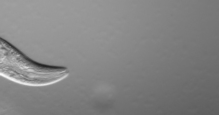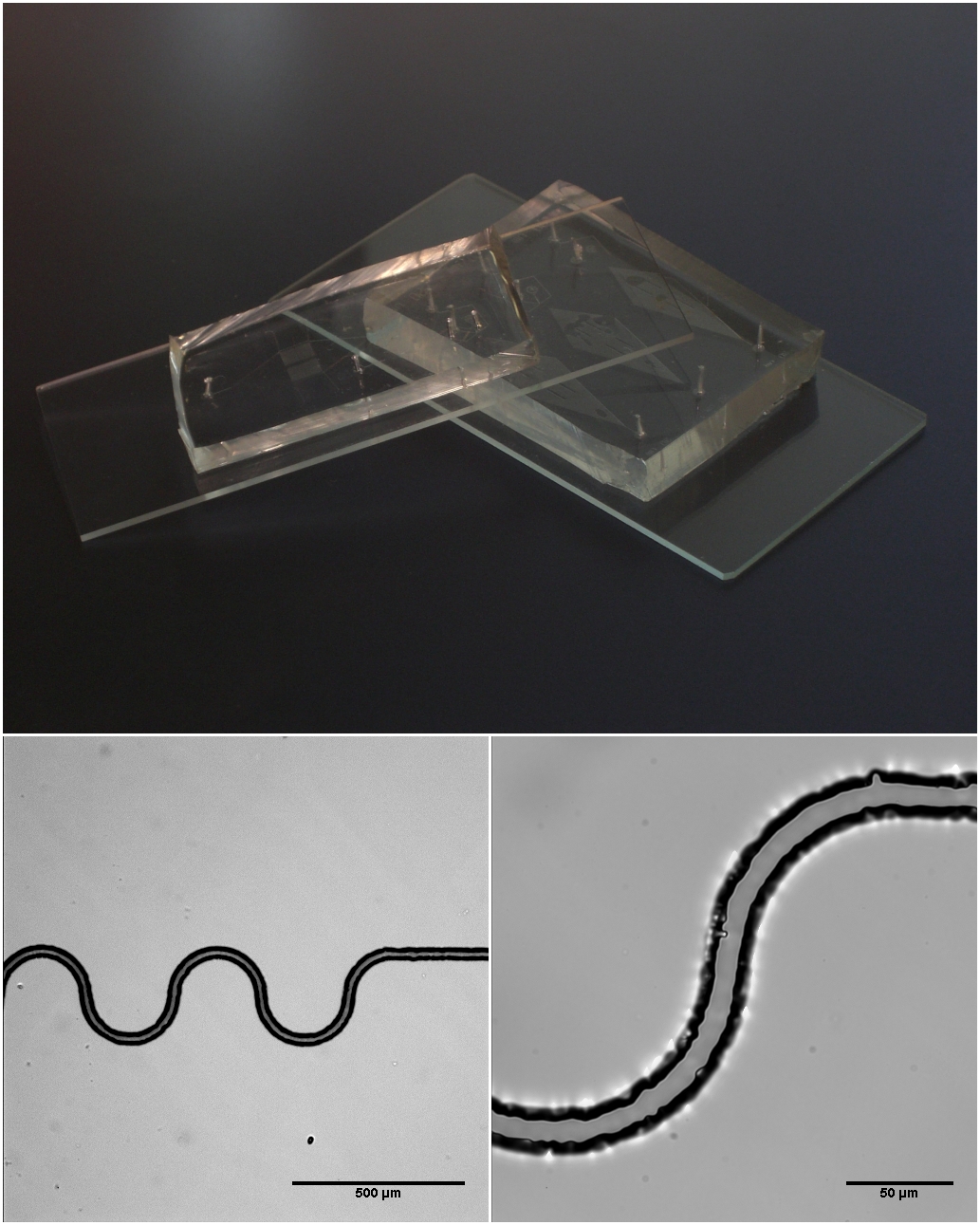|
RARAF
The Radiological Research Accelerator Facility (RARAF), located on the Columbia University Nevis Laboratories campus in Irvington, New York is a National Institute of Biomedical Imaging and Bioengineering biotechnology resource center (P41) specializing in microbeam technology. The facility is currently built around a 5MV Singletron, a particle accelerator similar to a Van de Graaff. The RARAF microbeam can produce with high accuracy and precision: * 70-120 keV/μm alpha particles * 8-25 keV/μm protons * 0.6 μm diameter focused beam spot * 10,000 cells/hour throughput History RARAF was conceived by Victor P. Bond and Harald H. Rossi in the late 1960s . Their aim was to provide a source of monoenergetic neutrons designed and operated specifically for studies in radiation biology, dosimetry, and microdosimetry. The facility was built around the 4 MV Van de Graaff particle accelerator that originally served as the injector for the Cosmotron, a 2 GeV accelerator operated at B ... [...More Info...] [...Related Items...] OR: [Wikipedia] [Google] [Baidu] |
Microbeam
A microbeam is a narrow beam of radiation, of micrometer or sub-micrometer dimensions. Together with integrated imaging techniques, microbeams allow precisely defined quantities of damage to be introduced at precisely defined locations. Thus, the microbeam is a tool for investigators to study intra- and inter-cellular mechanisms of damage signal transduction. A schematic of microbeam operation is shown on the right. Essentially, an automated imaging system locates user-specified targets, and these targets are sequentially irradiated, one by one, with a highly-focused radiation beam. Targets can be single cells, sub-cellular locations, or precise locations in 3D tissues. Key features of a microbeam are throughput, precision, and accuracy. While irradiating targeted regions, the system must guarantee that adjacent locations receive no energy deposition. History The first microbeam facilities were developed in the mid-90s. These facilities were a response to challenges in studying ... [...More Info...] [...Related Items...] OR: [Wikipedia] [Google] [Baidu] |
Nevis Laboratories
Nevis Labs is a research center owned and operated by Columbia University. It is located in Irvington, New York, on the property originally owned by Col. James Alexander Hamilton, the son of Alexander Hamilton, a graduate of Columbia College. James Hamilton built his mansion on this estate and named it Nevis in honor of the birthplace of his father. The land was donated to the university by a branch of the DuPont family The du Pont family () or Du Pont family is a prominent American family descended from Pierre Samuel du Pont de Nemours (1739–1817). It has been one of the richest families in the United States since the mid-19th century, when it founded its fo .... Construction of the 400 MeV Nevis synchrocyclotron took place between 1947 and 1949. University president Dwight D. Eisenhower inaugurated the accelerator in June 1950. During its period of operation from 1950 until 1972, it was one of the world's most productive accelerators. Currently the laboratory special ... [...More Info...] [...Related Items...] OR: [Wikipedia] [Google] [Baidu] |
Linear Energy Transfer
In dosimetry, linear energy transfer (LET) is the amount of energy that an ionizing particle transfers to the material traversed per unit distance. It describes the action of radiation into matter. It is identical to the retarding force acting on a charged ionizing particle travelling through the matter. By definition, LET is a positive quantity. LET depends on the nature of the radiation as well as on the material traversed. A high LET will attenuate the radiation more quickly, generally making shielding more effective and preventing deep penetration. On the other hand, the higher concentration of deposited energy can cause more severe damage to any microscopic structures near the particle track. If a microscopic defect can cause larger-scale failure, as is the case in biological cells and microelectronics, the LET helps explain why radiation damage is sometimes disproportionate to the absorbed dose. Dosimetry attempts to factor in this effect with radiation weighting fac ... [...More Info...] [...Related Items...] OR: [Wikipedia] [Google] [Baidu] |
Caenorhabditis Elegans
''Caenorhabditis elegans'' () is a free-living transparent nematode about 1 mm in length that lives in temperate soil environments. It is the type species of its genus. The name is a blend of the Greek ''caeno-'' (recent), ''rhabditis'' (rod-like) and Latin ''elegans'' (elegant). In 1900, Maupas initially named it ''Rhabditides elegans.'' Osche placed it in the subgenus ''Caenorhabditis'' in 1952, and in 1955, Dougherty raised ''Caenorhabditis'' to the status of genus. ''C. elegans'' is an unsegmented pseudocoelomate and lacks respiratory or circulatory systems. Most of these nematodes are hermaphrodites and a few are males. Males have specialised tails for mating that include spicules. In 1963, Sydney Brenner proposed research into ''C. elegans,'' primarily in the area of neuronal development. In 1974, he began research into the molecular and developmental biology of ''C. elegans'', which has since been extensively used as a model organism. It was the first multice ... [...More Info...] [...Related Items...] OR: [Wikipedia] [Google] [Baidu] |
Optoelectronic Tweezer
Optoelectronics (or optronics) is the study and application of electronic devices and systems that find, detect and control light, usually considered a sub-field of photonics. In this context, ''light'' often includes invisible forms of radiation such as gamma rays, X-rays, ultraviolet and infrared, in addition to visible light. Optoelectronic devices are electrical-to-optical or optical-to-electrical transducers, or instruments that use such devices in their operation. ''Electro-optics'' is often erroneously used as a synonym, but is a wider branch of physics that concerns all interactions between light and electric fields, whether or not they form part of an electronic device. Optoelectronics is based on the quantum mechanical effects of light on electronic materials, especially semiconductors, sometimes in the presence of electric fields. * Photoelectric or photovoltaic effect, used in: ** photodiodes (including solar cells) ** phototransistors ** photomultipliers ** optoiso ... [...More Info...] [...Related Items...] OR: [Wikipedia] [Google] [Baidu] |
Microfluidic
Microfluidics refers to the behavior, precise control, and manipulation of fluids that are geometrically constrained to a small scale (typically sub-millimeter) at which surface forces dominate volumetric forces. It is a multidisciplinary field that involves engineering, physics, chemistry, biochemistry, nanotechnology, and biotechnology. It has practical applications in the design of systems that process low volumes of fluids to achieve multiplexing, automation, and high-throughput screening. Microfluidics emerged in the beginning of the 1980s and is used in the development of inkjet printheads, DNA chips, lab-on-a-chip technology, micro-propulsion, and micro-thermal technologies. Typically, micro means one of the following features: * Small volumes (μL, nL, pL, fL) * Small size * Low energy consumption * Microdomain effects Typically microfluidic systems transport, mix, separate, or otherwise process fluids. Various applications rely on passive fluid control using capillary f ... [...More Info...] [...Related Items...] OR: [Wikipedia] [Google] [Baidu] |
Brookhaven National Laboratory
Brookhaven National Laboratory (BNL) is a United States Department of Energy national laboratory located in Upton, Long Island, and was formally established in 1947 at the site of Camp Upton, a former U.S. Army base and Japanese internment camp. Its name stems from its location within the Town of Brookhaven, approximately 60 miles east of New York City. It is managed by Stony Brook University and Battelle Memorial Institute. Research at BNL includes nuclear and high energy physics, energy science and technology, environmental and bioscience, nanoscience, and national security. The 5,300 acre campus contains several large research facilities, including the Relativistic Heavy Ion Collider and National Synchrotron Light Source II. Seven Nobel Prizes have been awarded for work conducted at Brookhaven Lab. Overview BNL is staffed by approximately 2,750 scientists, engineers, technicians, and support personnel, and hosts 4,000 guest investigators every year. The laboratory has ... [...More Info...] [...Related Items...] OR: [Wikipedia] [Google] [Baidu] |
Bystander Effect (radiobiology)
The radiation-induced bystander effect (bystander effect) is the phenomenon in which unirradiated cells exhibit irradiated effects as a result of signals received from nearby irradiated cells. In November 1992, Hatsumi Nagasawa and John B. Little first reported this radiobiological phenomenon. Effect There is evidence that targeted cytoplasmic irradiation results in mutation in the nucleus of the hit cells. Cells that are not directly hit by an alpha particle, but are in the vicinity of one that is hit, also contribute to the genotoxic response of the cell population. Similarly, when cells are irradiated, and the medium is transferred to unirradiated cells, these unirradiated cells show bystander responses when assayed for clonogenic survival and oncogenic transformation. This is also attributed to the bystander effect. Demonstration The demonstration of a bystander effect in 3D human tissues and, more recently, in whole organisms have clear implication of the potential relev ... [...More Info...] [...Related Items...] OR: [Wikipedia] [Google] [Baidu] |
Characteristic X-ray
Characteristic X-rays are emitted when outer- shell electrons fill a vacancy in the inner shell of an atom, releasing X-rays in a pattern that is "characteristic" to each element. Characteristic X-rays were discovered by Charles Glover Barkla in 1909, who later won the Nobel Prize in Physics for his discovery in 1917. Explanation Characteristic X-rays are produced when an element is bombarded with high-energy particles, which can be photons, electrons or ions (such as protons). When the incident particle strikes a bound electron (the target electron) in an atom, the target electron is ejected from the inner shell of the atom. After the electron has been ejected, the atom is left with a vacant energy level, also known as a core hole. Outer-shell electrons then fall into the inner shell, emitting quantized photons with an energy level equivalent to the energy difference between the higher and lower states. Each element has a unique set of energy levels, and thus the transition from h ... [...More Info...] [...Related Items...] OR: [Wikipedia] [Google] [Baidu] |
Quadrupoles
A quadrupole or quadrapole is one of a sequence of configurations of things like electric charge or current, or gravitational mass that can exist in ideal form, but it is usually just part of a multipole expansion of a more complex structure reflecting various orders of complexity. Mathematical definition The quadrupole moment tensor ''Q'' is a rank-two tensor—3×3 matrix. There are several definitions, but it is normally stated in the traceless form (i.e. Q_ + Q_ + Q_ = 0). The quadrupole moment tensor has thus nine components, but because of transposition symmetry and zero-trace property, in this form only five of these are independent. For a discrete system of \ell point charges or masses in the case of a gravitational quadrupole, each with charge q_\ell, or mass m_\ell, and position \vec_\ell = \left(r_, r_, r_\right) relative to the coordinate system origin, the components of the ''Q'' matrix are defined by: : Q_ = \sum_\ell q_\ell\left(3r_ r_ - \left\, \vec_\ell \righ ... [...More Info...] [...Related Items...] OR: [Wikipedia] [Google] [Baidu] |




